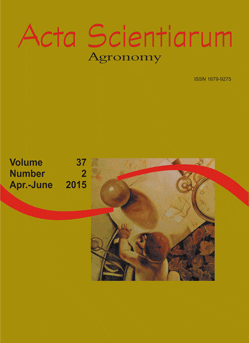<b>Changes in pectinases, dietary fibers, and physicochemical indices related to the flavor of cubiu fruits during ripening
Abstract
The objective of this study was to evaluate the changes in the activity of pectinases (pectinesterase and polygalacturonase), dietary fiber content (alcohol-insoluble solids, pectin, and total fiber), and physicochemical indices related to the flavor (pH, titratable acidity, soluble solids, Brix/acid ratio, and reducing and nonreducing sugars) of cubiu fruits (Solanum sessiliflorum Dunal) at different stages of ripening (green, turning, ripe, and fully ripe). Alcohol-insoluble solids and pectin were very similar, with the highest levels detected at the green and turning stages, and the lowest levels occurring at the fully ripe stage. The amount of total fiber was consistent at the green, turning, and ripe stages, but declined at the fully ripe stage. These changes correlated with the pectinase activities, the profiles of which resembled those of other species of the Solanaceae family during fruit ripening. However, cubiu fruits were significant sources of dietary fiber at all stages. The reducing sugar content reached the highest level at the turning stage, with glucose as the major sugar. The content of nonreducing sugars, such as sucrose, remained low at all stages. The other physicochemical indices displayed increases during ripening, characterizing cubiu as a very acidic fruit with a small degree of sweetness.
Downloads
DECLARATION OF ORIGINALITY AND COPYRIGHTS
I Declare that current article is original and has not been submitted for publication, in part or in whole, to any other national or international journal.
The copyrights belong exclusively to the authors. Published content is licensed under Creative Commons Attribution 4.0 (CC BY 4.0) guidelines, which allows sharing (copy and distribution of the material in any medium or format) and adaptation (remix, transform, and build upon the material) for any purpose, even commercially, under the terms of attribution.




















































